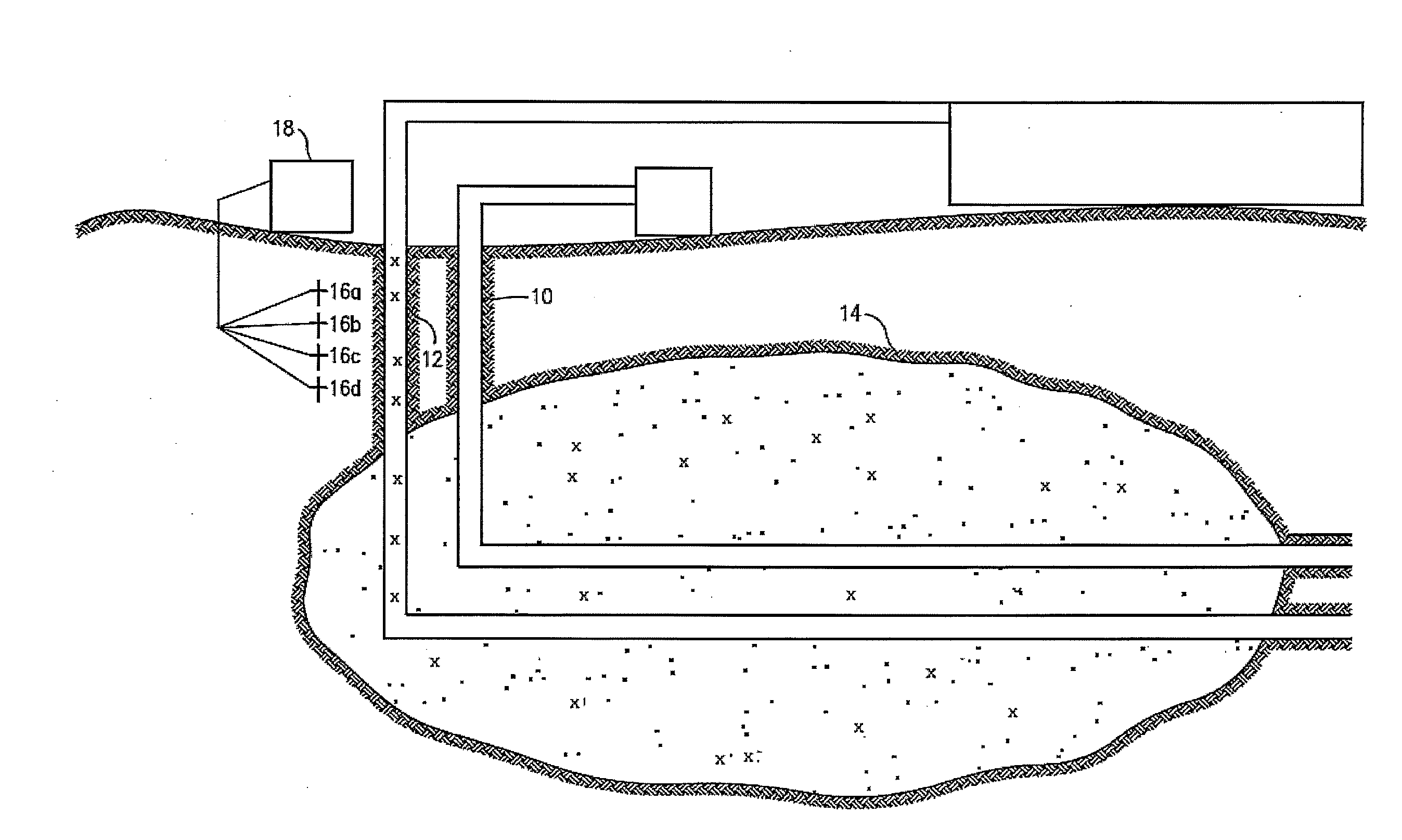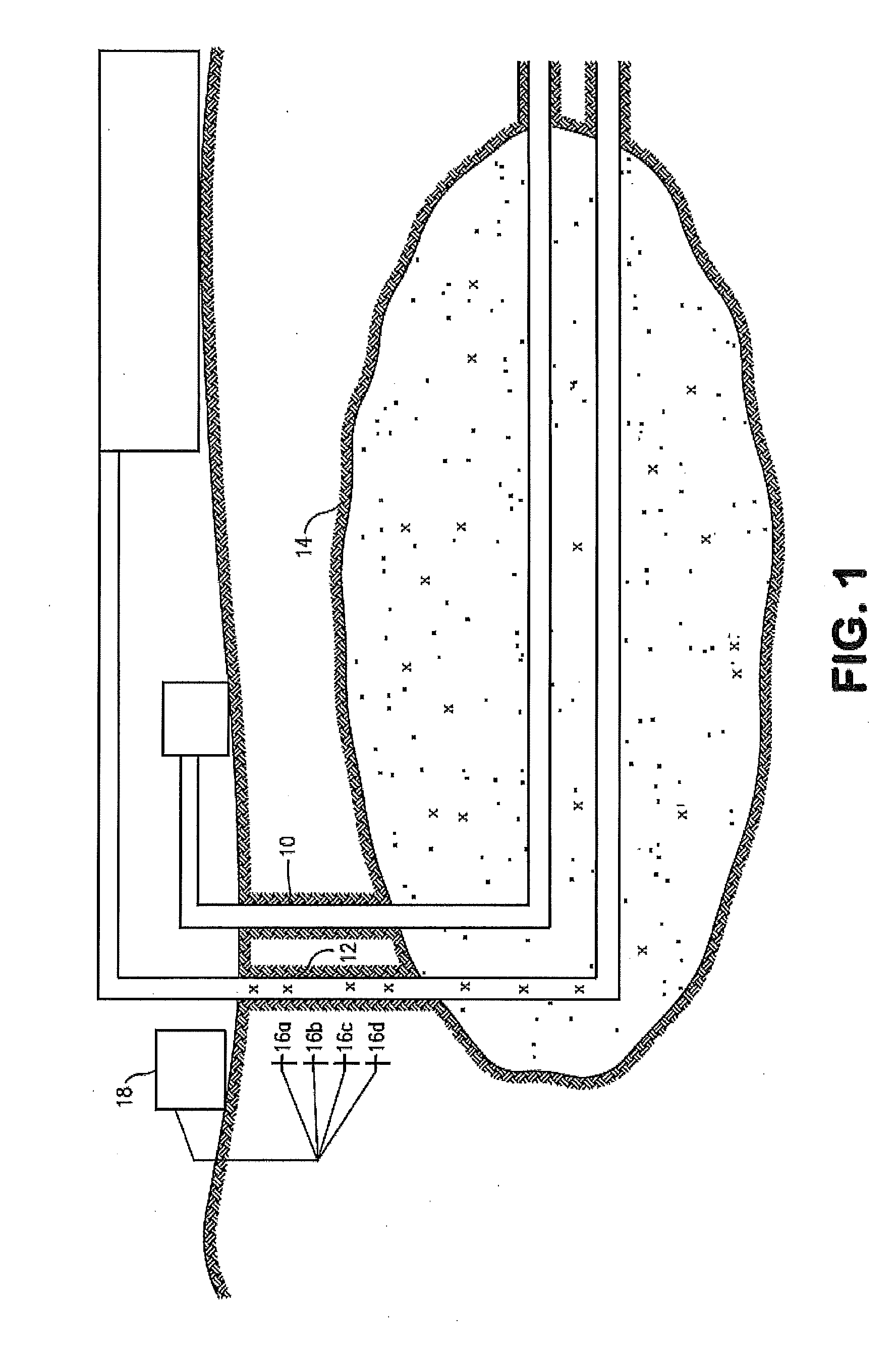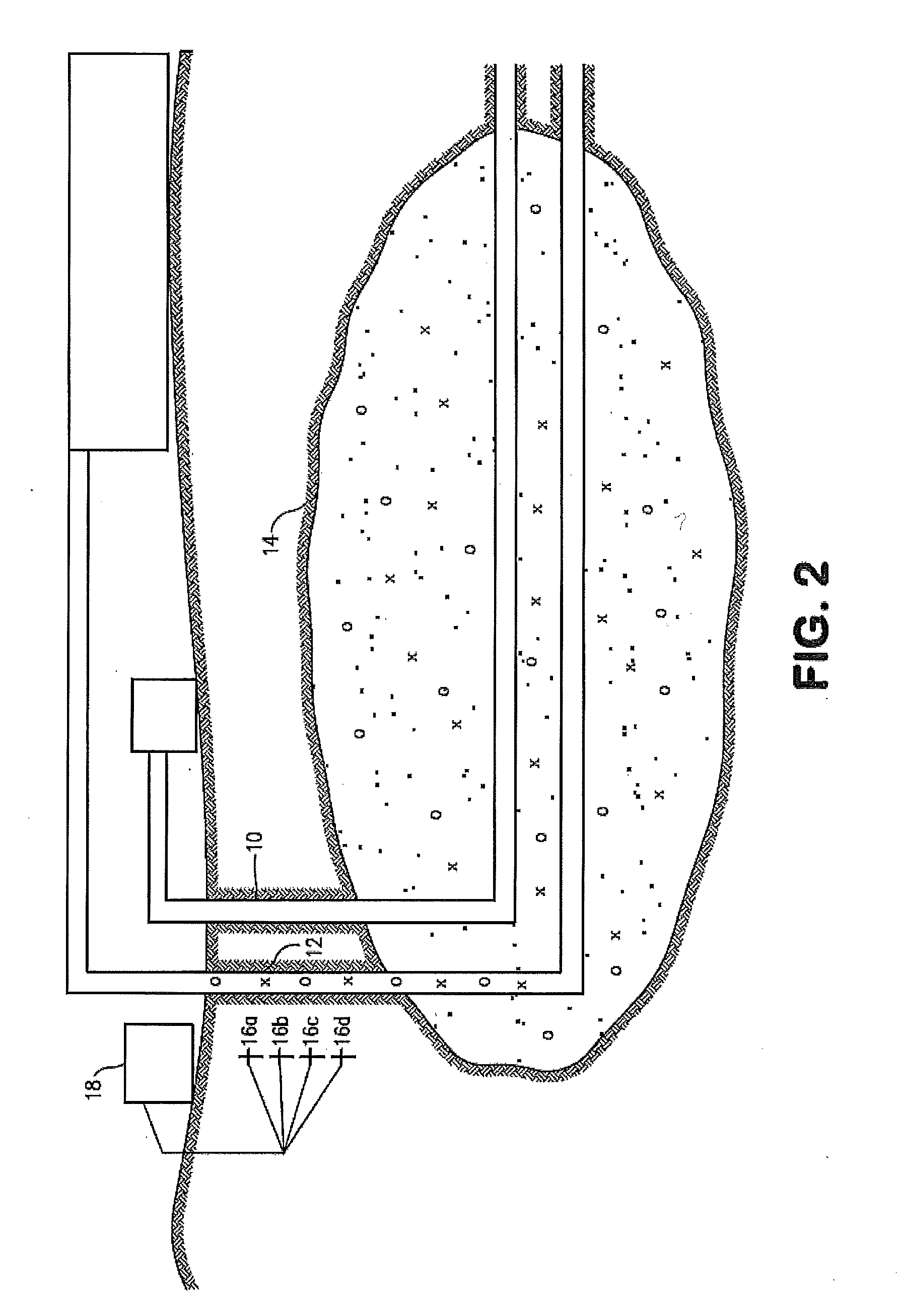In-situ upgrading of heavy crude oil in a production well using radio frequency or microwave radiation and a catalyst
a technology of radio frequency or microwave radiation and catalyst, which is applied in the direction of fluid removal, borehole/well accessories, insulation, etc., can solve the problems of reducing the activation energy required for converting and breaking down carbon-carbon bonds, water required and green house gas emissions, and hydrocarbons not typically couple well with mw radiation
- Summary
- Abstract
- Description
- Claims
- Application Information
AI Technical Summary
Benefits of technology
Problems solved by technology
Method used
Image
Examples
Embodiment Construction
[0018]The current method teaches the ability to upgrade heavy oil in a production well. The method first raises the temperature of heavy oil inside a production well of a steam assisted gravity drainage operation. The method also upgrades the heavy oil through the use of a catalyst to hydrogenize or desulfurize the heavy oil, injected into the production well.
[0019]During the raising of temperature of the heavy oil inside the production well activators and microwave frequencies are utilized. The temperature of the heavy oil is raised inside the production well by injecting an activator into the production well; directing a microwave frequency into the production well; exciting the activator with a microwave frequency and heating the heavy oil inside the production well with the excited activator.
[0020]By choosing specific activators to inject into the production well, one skilled in the art would have the requisite knowledge to select the exact RF / MW frequency required to achieve ma...
PUM
 Login to View More
Login to View More Abstract
Description
Claims
Application Information
 Login to View More
Login to View More - R&D
- Intellectual Property
- Life Sciences
- Materials
- Tech Scout
- Unparalleled Data Quality
- Higher Quality Content
- 60% Fewer Hallucinations
Browse by: Latest US Patents, China's latest patents, Technical Efficacy Thesaurus, Application Domain, Technology Topic, Popular Technical Reports.
© 2025 PatSnap. All rights reserved.Legal|Privacy policy|Modern Slavery Act Transparency Statement|Sitemap|About US| Contact US: help@patsnap.com



